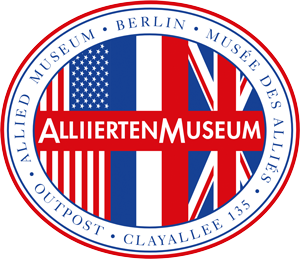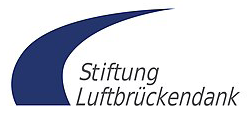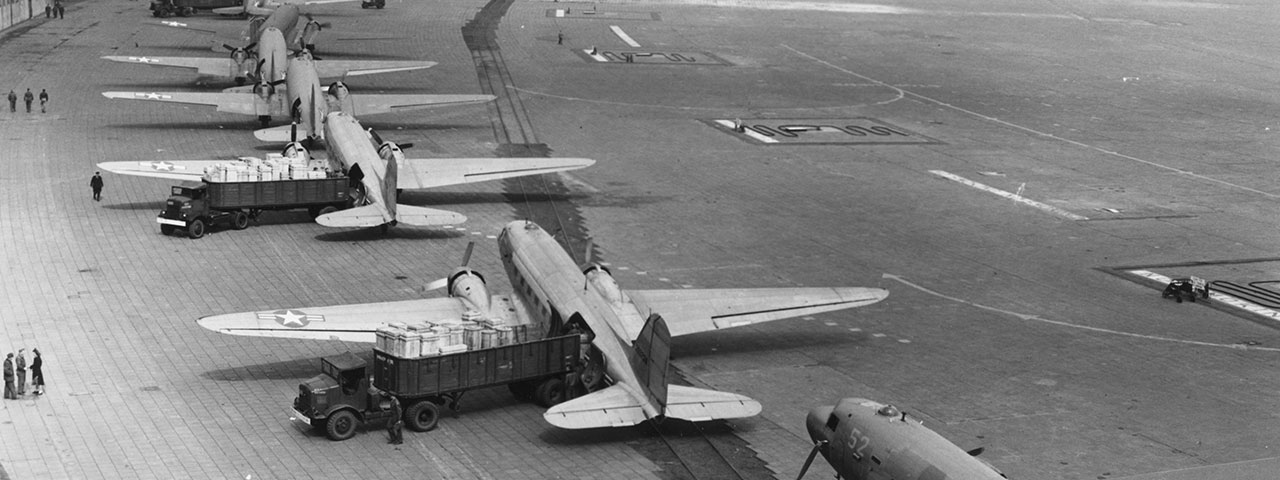People
We would like to introduce some of the people here who were involved in the Berlin Airlift in different functions.
Gerhard Bürger (1930 – 2017) “Do you want to be a firefighter?”
In the early summer of 1945, the Soviet military administration assigned the 15-year-old Gerhard Bürger to various work details in the district of Tempelhof. That is how he came to be part of a clean-up crew at the airport. One day in July he discovered American cigarette butts on the ground – the first sign of a change of occupiers. The Soviet forces had occupied Tempelhof Airport on April 28 and 29, 1945, and on July 4 they turned it over to the U.S. Air Force as agreed. Gerhard Bürger continued to work at the airport during the tenure of the U.S. Air Force, although he now also did maintenance tasks. Then one day an American soldier asked him, “Do you want to be a firefighter?” He did. After several months of training, Bürger began working for the airport’s fire brigade in 1947. It had a total of four fire engines in Tempelhof. The firemen worked in three shifts, with each shift composed of five Americans and eight Germans. With the beginning of the Airlift in late June 1948, the demands on the fire brigade grew, and the staff had to be expanded to about 40 people. Gerhard Bürger was appointed Assistant Crew Chief and was thus the shift supervisor for the German crew. In the months of the Airlift a number of smaller and larger accidents occurred, but there were no deaths. Most often, the firefighters were responding to incidents caused by construction work on the runways, for example when hot tar ignited at the tar pots. Gerhard Bürger worked for the airport fire brigade in Tempelhof until 1950. He retains vivid memories of his time on the German-American crew.
Henri Coisne (*1923) A Franco-German Friendship
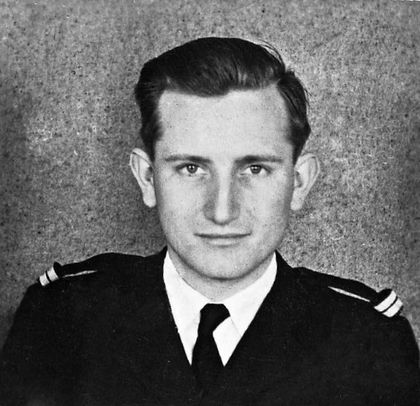 © Archiv AlliiertenMuseum/Coisne
© Archiv AlliiertenMuseum/Coisne
On April 27, 1948, First Lieutenant Henri Coisne, then twenty-four years old, Sergeant Janin and Senior Master Sergeant Girard, along with an airplane mechanic from the military transport group GT 2/61 Maine in Le Bourget near Paris, received orders to fly to Freiburg and from there to Berlin. The GT 2/61 Maine was stationed in Freiburg with a special unit of three to four aircraft on average and flew to Berlin daily via Baden-Baden and Wiesbaden. The special unit had only been established on April 6, 1948 in response to political developments in Berlin. For days now, the news from the city occupied by the four Allied powers had been becoming increasingly worrying. On a number of occasions, the Soviet military had tried to prevent the Western Allies’ troop trains and military vehicles from entering and leaving Berlin.
Henri Coisne had only recently returned from deployment in Africa. When orders came to make transport flights to Berlin, he sensed that this would be an unusual mission. Coisne was unlikely to feel warmly about Germany and the Germans. His father had been decorated several times for service during the First World War. Anti-German sentiment had marked the young Henri´s childhood. When he fled over the Pyrenees himself in the summer of 1943, German soldiers had shot at the small French group. He ultimately reached Spanish territory unharmed and continued his journey to Casablanca in North Africa, where he began his pilot’s training. He completed it in Tuscaloosa, Alabama, where he was also living when the war ended. After deployment in Indochina, Coisne returned to France in October 1947. He now served in the GT 2/61 Maine, where he received his orders to proceed to Berlin.
Henri Coisne could not imagine at the time that the memory of this mission would stay with him all his life. First he had to fly the Junkers 52 to Berlin via Freiburg. Although the Soviet Union only imposed the actual blockade of Berlin a few weeks later, flights by Western Allied military aircraft had already increased in the three air corridors. The transported supplies of food and sacks of coal were then unloaded by German warehousemen at the French support base in Berlin-Tempelhof. Three years after the end of the war, this was Henri Coisne’s first contact with the German population. The new experience of working together helped him to overcome his defining war experiences. For Coisne, the Airlift was the beginning of a friendship with Germany. (Text: U.Birkemeyer)
Jean Eastham (1928 - 2019)“A wonderful night to remember”
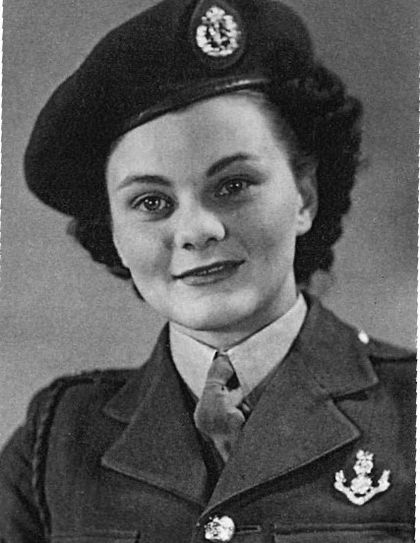 © Archiv AlliiertenMuseum/Eastham
© Archiv AlliiertenMuseum/Eastham
In 1946, against her parents’ wishes, Jean Eastham, née Hart, joined the Auxiliary Territorial Service (ATS), the women’s branch of the British Army. On February 1, 1949, this unit was integrated into the first regular women’s corps, the Women’s Royal Army Corps (WRAC). In May 1948 Jean Hart was transferred to Berlin, where one month later she experienced the blockade of the city and the beginning of the Airlift. In Berlin she worked in the administration of the women’s auxiliary service, working and living in the Charlottenburg district. “B” Company, to which she belonged, had about 40 female members. “A“ Company had its headquarters in Hamburg, so that Hart had to be flown to Hamburg several times for meetings during the Berlin blockade. Her female colleagues in Berlin worked as secretaries, typists, nurses or cooks, among other positions. During the Airlift, the Royal Air Force also deployed women as mechanics in aircraft maintenance.
On December 25, 1948 Jean Hart attended the American show Christmas Caravan at the Titania-Palast in the Steglitz district of Berlin. An American all-star ensemble featuring the entertainer Bob Hope as well as the composer and songwriter Irving Berlin had been engaged to put on shows in various locations to entertain the troops participating in the Airlift. Irving Berlin sang Operation Vittles, the song he wrote especially for the Airlift. Together with a British journalist, Hart watched the show from backstage, where she conversed with Bob Hope and other members of the ensemble. The show was a great success and Hart still looks back on it as “a wonderful night to remember.”
Jean Hart was discharged from the army in April 1949 at her own request and returned to England, where she married shortly thereafter.
(Text: B.v.Kostka)
Gail S. Halvorsen (1920 - 2022)Ambassador of the Airlift
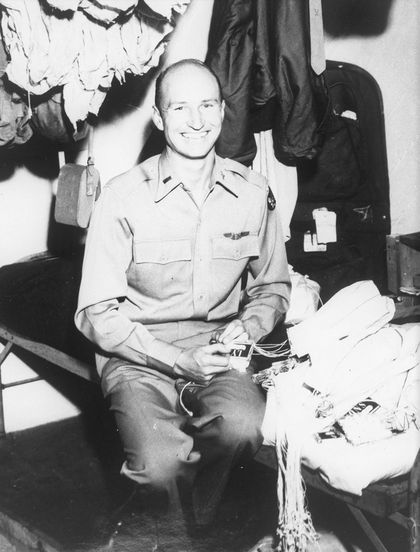 © Archiv AlliiertenMuseum/US Air Force
© Archiv AlliiertenMuseum/US Air Force
He has told the story countless times, but even 60 years on (in 2008), it still sounds unbelievable. Like many of his comrades, U.S. pilot Gail Halvorsen was convinced that the Airlift to aid the population of Berlin would be of short duration. For that reason, he wanted to use his scarce leisure time to visit the German capital – “the Reichstag, the Brandenburg Gate, Hitler’s bunker”– as he recounted in his 1990 book The Berlin Candy Bomber. Reports on the extent of Berlin’s destruction were so unimaginable at the time that members of the Western Allied armed forces, in particular, wanted to see the situation with their own eyes. Tempelhof Airport was also on Halvorsen’s sightseeing program. He didn’t get far, though. At the barrier fence he was already met by a group of Berlin children. During the Second World War Halvorsen had made transport flights to Central and South America. He was used to loud begging by local children from his contacts with the population there. They had always wanted chocolate, candies or chewing gum. The Berlin children, however, wanted to talk with him. Although communication must have been rather basic given the language barrier, the encounter was to have far-reaching consequences, for after Halvorsen said good-bye to the children, he returned to the fence to give them sweets. “I didn’t know it,” Halvorsen recalled in his memoirs, “but if I chose the fence my life would never be the same again.” His promise to drop sweets from little parachutes whenever he landed from then on led to “Operation Little Vittles” and contributed significantly to the development of friendly relations between Americans and Germans in the course of postwar history. Even today, Berliners who were children at that time have vivid memories of the action. The same is true of participants in the United States. In the Northeast, no fewer than 22 schools collected sweets, made parachutes, and procured packing material. So many people supported “Operation Little Vittles” that many tons of sweets could be presented to the children of Berlin.
The Berlin Airlift had a lasting impact on Gail Halvorsen’s life. Today, we can say without any exaggeration that he is the ambassador of the Airlift. Wherever in the world people speak about this operation, his name is mentioned. Neither he personally nor his comrades from that time regard themselves as heroes, though. To be sure, their missions in the air corridors over the Soviet zone of occupation were not without risk. But without the will of the people of Berlin to stand up for their own freedom despite the restrictions and privations of the Soviet blockade all of this would have been meaningless. The protagonists of the Airlift were the first to recognize this during their missions.
Even today, Gail Halvorsen is actively engaged in keeping the memory of the memory of the Airlift alive. At the age of 87 (in 2008) he can still be found in the cockpit – especially of the “Spirit of Freedom”, the C-54 from the Airlift era that enthusiasts and veterans from the Berlin Airlift Historical Foundation in Farmingdale, New Jersey, have turned into a flying museum. German-American relations have also remained a force in his life. At the ceremony to mark the end of his time as commander of Tempelhof Airport in 1974, he was awarded the Order of Merit of the Federal Republic of Germany, and during the 2002 Olympic Winter Games in Salt Lake City it was he who led the German team into the stadium for the opening ceremonies.
(Text: H. Trotnow)
Rex N. Waite (1901 – 1975) Thinking the unthinkable
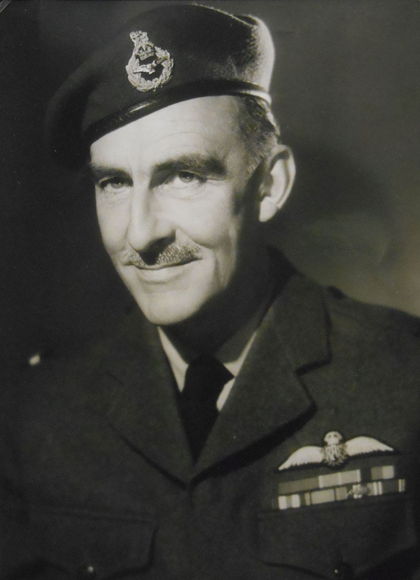 © Archiv AlliiertenMuseum/Waite
© Archiv AlliiertenMuseum/Waite
Air Commodore Reginald “Rex” N. Waite had been the supreme commander of Britain’s Royal Air Force in Berlin since 1947. When, in April 1948, the Soviet side blocked the access channels to Berlin for a few days, the Americans and the British increased the number of flights bringing supplies to their troops in the city during those days. This “small airlift” was soon forgotten by most people, but not by Waite. It prompted him to work out detailed plans for the potential supply of West Berlin by air. As we know from his written correspondence, he thought that a blockade of the city was a distinct possibility, and so he started working on calculating the unthinkable. In 1948, it really was “unthinkable” in the truest sense of the word to completely supply more than 2 million people from the air. Waite calculated how many planes would be needed to supply their own garrisons.
These considerations and calculations acted as the basis for the Berlin Airlift later on. When the blockade got underway, Washington rejected the suggestion by US Military Governor, General Lucius D. Clay, to break the blockade using military means. The British Military Governor, Sir Brian Robertson, took Tex Waite with him to a meeting with Lucius Clay, where Waite put forward his proposal. Clay was convinced by Waite’s explanations and gave his full support to the idea.
During the Airlift, Waite was in charge of organisational activities in Berlin, but did not appear in public to any great extent. In 1949, Waite received the medal, Companion of the Order of the Bath, which once again stressed the outstanding role he played during the Airlift. Over the decades his achievements became forgotten by many – also because Lucius D. Clay went down in history as the “father” of the Airlift.
However, after the 50th anniversary of the Airlift in 1998, Waite was rediscovered by historians and the public, and is now rightly seen as the person who came up with the idea for the Berlin Airlift. In 2000, a street in the Berlin district of Gatow was named after him.
Robert Wilcox (1922 – 2017) Airlift Pilot of the Early Days
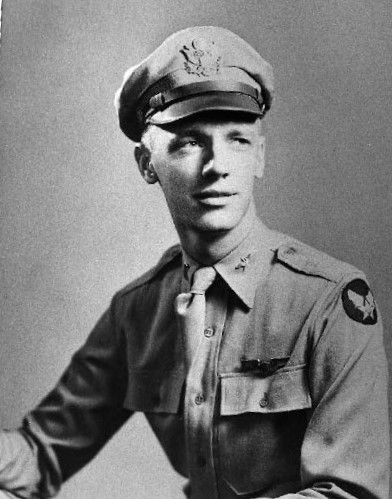 © Archiv AlliiertenMuseum/Wilcox
© Archiv AlliiertenMuseum/Wilcox
The American Robert Wilcox served as a pilot in Europe dur ing the Second World War. He was stationed in Kaufbeuren and Erding from 1946 to 1948. On June 29, 1948 the First Lieutenant in the U.S. Air Force was ordered from there to Wiesbaden to fly for the airlift. He was therefore one of the pilots who flew missions to Berlin during the first days of the airlift. His journal entries for June 30 and July 1, 1948 provide a very good description of this early period of “Operation Vittles”, in which not everything ran smoothly:
Wednesday, June 30
Got down to Operations at 0700 and found we weren’t scheduled to take off until 0910. As I sat in the lounge, Major Kannor came in. We talked for a while, but he didn’t say anything about relieving me from this duty. I’m glad he didn’t, because that would make me feel like a slacker. Made two flights to Berlin and back today with a total of 0915 flying time with three hours of that actual weather. On the first trip we hauled 6,000 lbs of canned crushed pineapple. On the second trip we hauled 6,000 lbs. of flour in 100 lb. sacks. Called Don Wahl on my last trip and talked for a few minutes. Rumor had it that the Russians had stuck barrage balloons in the corridors, but I saw only one. When we got in from our last flight at 2200, they hit us with the great news that we are to take off again at 0215 tomorrow morning – 3 hours from now.
Thursday, July 1
Nick & I climbed out of the sack at 0115 and trudged down to Operations. When we got there, they told us there was something wrong with our airplane and to report back at 1230, so we gratefully climbed back into the sack. After lunch, we reported back to Ops and I taxied a couple of empty ships over to the loading ramp before Nick & I took off. We got as far as the Fulda range when the left engine started giving us a bad time. About 10 minutes later, it tried to quit again, so we returned to Wiesbaden. They told us our next takeoff time was to be 0115 tomorrow morning, so I hit the pad about 1930. At 2300, Nick came in and said our takeoff time had been set back until 0615. It’s getting so that we’ re living on such a confused schedule that we can hardly tell what day it is. It’s satisfying work, however.
